MEC11110 Energy Materials Life Cycle Analysis
1.0 Introduction
This project is going to be discussed about the process of the Life Cycle Analysis along with the evaluation of the life cycle implementation assessment. Polymer is a cluster of natural or manufactured compounds, a multitude of smaller chemicals, termed monomers and consist of very big, so-called “macromolecules”. Polymers include many substances, such as “protein”, “cellulose and nucleic acids” in living organisms. They also provide the base for minerals such as “diamonds”, “quartz”, and “feldspar”, and “man-made materials” such as materials such as “concrete”, “glass”, “paper”, “plastics” and “rubbers”. “The word polymer” indicates several “monomer units” undefined. The compound is frequently referred to as a “high polymer” when the number of “monomers” is quite big. “Polymers” are not limited to the same “chemical or molecular” weight and “structural monomers”. Some “natural polymers” consist of a “monomer” of one type. However, two or more distinct types of monomers comprise most natural and manufactured polymers; these polymers are known as copolymers. In this project, it is going to be discussed about the process of the LCA for the organic polymer.
2.0 Background Study
“Organic polymers” serve an important function in living organisms, provide fundamental components and participate in life processes. The “solid components” of “all plants” consist of “polymers”, for example. “Cellulose”, “lignin”, and different “resins” are among them. “Cellulose” is a “polysaccharide” which consists of molecules of sugar. Lignin comprises a complex 3D polymer network. “Wood resins” are basic “hydrocarbon polymers” and “isoprene”. “Rubber” is also a commonly known “isoprene polymer”. The “proteins”, which comprise “amino-acid polymers”, and “nucleic acids”, which are “nucleotide polymers”—“complex molecules” made of bases of “nitrogen”, sugars and phosphoric acid—are other significant natural polymers. In the cell, the nucleic acids contain genetic information. Natural glucose polymers are starches, significant sources of dietary energy produced from plants. In analyzing the cradle-to-grave effects of a “product or process”, “life cycle assessment” has developed as a helpful tool for decision-makers and industry to assist decisions. Three factors drive this development. First, government rules move towards ‘life cycle liability,’ the concept that a producer has responsibility for the direct consequences of manufacturing and product inputs, usage, transportation, and disposal. Secondly, the company is involved in volunteer projects containing components of LCA and product management. In analyzing the cradle-to-grave effects of a “product or process”, “life cycle assessment” has developed as a helpful tool for decision-makers and industry to assist decisions. Three factors drive this development. First, government rules move towards ‘life cycle liability,’ the concept that a producer has responsibility for the direct consequences of manufacturing and product inputs, usage, transportation, and disposal. Secondly, the company is involved in volunteer projects containing components of LCA and product management.
3.0 Discussion
3.1 “Organic photovoltaic.”
The goal is to create an Earth-rich, low-energy photovoltaic (PV) solution for Organic photovoltaic (OPV) solar cells. The theoretical potential of this technology is also to supply power at cheaper costs than solar technologies of the first and second generation. Due to the ability to manufacture colourful and transparent OPV devices from different absorbers, this technology appeals especially to the built-in PV industry. Efficiencies of almost 11% in organic photovoltaic have been obtained, although both efficiency and long-term dependability are still serious obstacles (Ferreira, 2020.). “OPV cells” employ molecular or “polymeric absorbers”, which produce a localized exciting instead of typical inorganic solar cells. The absorber is employed in combination with a complement that provides molecular orbital energy to assist the transmission of the electron. The resultant exciting migrates to the contact between the material from the absorber and the material from the electron receiver. At the contact, the molecular orbital energy malfunction provides enough driving strength to break apart the exciting and produce free carriers, an “electron” and a “hole”.
“PRODUCTION”
There are “two classes” of “OPV cells”
- “Small-molecule OPV cells”
- “Polymer-based OPV cells”
Small molecules “OPV cells” employ molecules with large absorption of electromagnetic spectrum visible and near-infrared part. Highly conjugated systems, including phthalocyanins, polyamines and squares, are usually utilized for electrons. Perylene dyes and completeness are commonly employed as systems for electron acceptance. These devices are created mainly through the creation of bilayer and tandem structures by vacuum deposition. Small-molecule solutions have been recently created.
3.2 “Life Cycle Inventory” of “Organic Polymer.”
The life cycle evaluation is a “cradle to graves” method, beginning with the mining and ending when the substance enters the grave of the “Earth”. ( Ramos, A. and Rouboa, 2020). The cumulative impacts of the environment at each stage of a “product life cycle” are incorporated to provide a full overview of the environment’s effects and assess the tradeoffs in product and process choices. The LCA is helping to minimize environmental concerns by doing this complete study, which encompasses all product cycles and various indicators. LCA is an ISO technique which requires a method of its standardization. It consists of four phases, as seen in the following:
Objective and scope definition: Item, procedure or interest activities are identified and specified by setting explicit system limits and metrics. During this phase, it is necessary to include the major information necessary and the interpretation and application of “LCA” results. In addition, a difference must be made between front and background data (Cheng, 2020). The major concern system is the foreground system while the background system employs aggregate data sets similar to all the different circumstances.
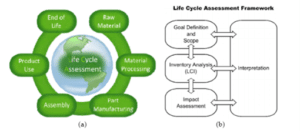
Figure 1: Life Cycle Assessment of Organic Polymer
(Source: https://www.researchgate.net/publication/221929088_Life_Cycle_Assessment_of_Organic_Photovoltaics)
“Inventory Analysis”: The data are collected and arranged in all relevant areas. The degree of precision and detail will affect the analytical quality. The assumptions and limitations of information gathering, such as cut-off criteria, need to be explicitly specified. The objective and scope phase has set general system limits, which need to be more, specified and examined utilizing the four subsequent phases: 1. Formulate the data collection strategy 2. Collect data 3. Evaluate and report on data outcomes 4. Formulate data collection schedule.
“Impact Assessment”: Inventory information is utilized together with suitable measurement methods for predicting potential effects on humans and environment.
“Interpretation”: Evaluation of inventory findings and impact analysis results for the selection of a favorite product, method or service.
The LCA method is iterative, as seen in Fig. 1. The interpretation is carried out throughout the procedure, for example, and the findings collected are used to reassess each phase. The company offers a variety of business tools to ease data collection and analysis for life-cycle evaluation (Prabhakaran, 2019). The programme also provides” life-cycle inventory” databases for numerous chemical products and processes used to shape the backdrop system in general. An LCA framework is provided with the ISO and EPA standards. This paradigm, however, gives a range of alternatives for each practitioner that might influence the validity of outcomes. The IEA has recently issued guidelines to guarantee coherence amongst photovoltaic LCA assessments. The “PV-LCA” specialists in “North America”, “Europe and Asia” agree to assume “PV efficiency”. This paper provides information on the inputs of the photovoltaic parameters in LCA, on the choices and hypotheses for analysis and implementation of life-cycle data. In particular, the IEA guidelines encourage transparency in reporting. This is extremely important as the parameters differ across geographic areas, and the boundary conditions of the system and the modelling technique may substantially influence the conclusions.
“Understanding of LCA”
In view of the key goal of solar photovoltaic to minimize the environmental impact of using fossil fuel sources, the recommendations include specific prototypes such as “energy return time” (“EPBT”), time-to-recover non-renewable energy (“NREPBT”), “energy return on investment” (“EROI”) and “impact mitigation potential” (“IMP”).
“Energy Payback Time”
The EPBT shows how long it takes to make up for the total primary energy requirements of renewable and non-renewable sources within a PV system’s service life cycle. The annual generation of electricity (Eagen), which depends on the “efficiency of the demand-side” electrical conversion, is transformed into its “equivalent primary energy” by using the current mean (attributive “LCAs”) or long-lasting marginal grid combinations when “PV plant” is installed.
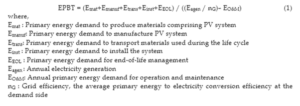
3.3 “Life Cycle Impact” “Assessment of Organic Polymer.”
According to the International Energy Agency, there is rising worry about climate change and greenhouse gaseous emissions. At the same time, over 1800 million people survive without “access to electricity” thus, there is the inevitable necessity to think about sustainable energy for those who need it (Yudha, 2018). The main hurdles were: poor solar density and expensive photovoltaic modules cost. Although high energy conversion rates for renowned PV systems are achieved regularly, the cost per kWh of solar electricity continues to be quite high. Many impacts can be seen like;
“Life cycle” of “greenhouse gas (GHG) emissions”
Throughout its power generation, stage photovoltaic systems create no greenhouse gas emissions, but if we take care of the full life cycle, pollutant emissions must be taken into consideration during the manufacturing, decommissioning, and recycling stages. The approach employed here is to compute the emissions from the incoming energy, one of the outputs of the computation of the preceding energy return time(Campos-Guzmán, 2019). Then we have to presume that the facility in which we are going to create the modules has a certain energy mix. The USPTO database will be provided.
“Life cycle” of “organic photovoltaic modules”
The life chain of “organic photovoltaic modules” is discussed. As the commercial manufacturing of “photovoltaic” pure “organic cells” is not yet available, our computation is based on the present laboratory technique. Here we analyse the normal method for the preparation of laboratory samples in most groups and ourselves.
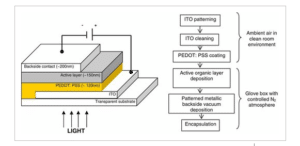
Figure 2: For Full Organic Solar cells laboratory Process
(Source: https://onlinelibrary.wiley.com/doi/full/10.1002/pip.967)
First, we discuss the manufacturing stages and compute the energy input from these operations (Sampaio, 2018). The raw materials life cycle is then analysed. The result of this study calculates a final stock of materials and “energy in material” and “cell processing”. In conclusion, a comparison is provided with various “photovoltaic technologies”.
3.4 “Interpretation of the Data”
Photovoltaic cells create useable solar energy through many phases in energy conversion. Light consists of energy packets, called photons, which depend on light frequency or color (Hosseini-Fashami, 2019). The solar spectrum spans the wavelength ranges ultra-violet to infrared. The visible light range is just 30% of the electricity produced by incident light whereas over 50% is “infrasound”. However, “IR wavelengths” are too weak to power using standard “PV technology”.
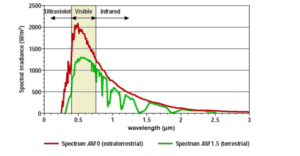
Figure 3: Solar Spectrum
(Source: https://deepblue.lib.umich.edu/bitstream/handle/2027.42/62335/myungsu_1.pdf)
Becquerel observed that, with light exposure, some materials create tiny quantities of electricity. In 1905 Einstein explained the “photoelectric effect”, which provided an opportunity to comprehend the photovoltaic effect theoretically. If photons are lit on a metal surface in the UV spectrum, free electrons exit the metal surface by arousing energy from the light incidents.
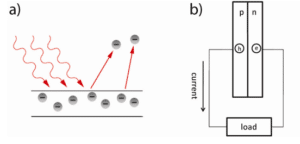
Figure 4: Photovoltaic Effect
(Source: https://deepblue.lib.umich.edu/bitstream/handle/2027.42/62335/myungsu_1.pdf)
By the experimentation using an electrolytic cell consisting of two metal electrodes, Edmund Becquerel, a French experimental scientist, discovered the “photovoltaic phenomena” in 1839. Becquerel found that some materials produce small amounts of electricity with light exposure. Einstein discussed in 1905 the photoelectric effect, which gave a theoretical understanding of the “photovoltaic effect”. The “photovoltaic process” consists of four phases: light absorption, load production, load transit and load collecting. The absorption characteristic depends on the band gap and inherent extinguishing coefficient of the “semiconducting material”. The next phase is the production of charges. Inorganic semiconductors create free transmission systems when the incoming photon hits Electrons in a ground condition. However, stimulated electrons relax in organic semiconductors and form an exciting, bonded electron and whole pair. Effective dissociation of exactions is an important challenge for an efficient organic photovoltaic cell since the energy of the binding exciting is considerable. The next step is to transfer dissociated charges to electrodes using charging transport routes when the exciting is dissociated (Sampaio, 2017). During transport of loads, cell performance diminishes if the medium is conveyed with defects such as load traps or obstacles that prevent cargo movement. To increase cell performance, this loss mechanism should be removed during transit. The last stage is the collection of charges, which happens when charges are collected via a contact between the semiconductor and the cathode or anode. If the contact is not carefully tuned, the conveyed charges can be dissipated.
4.0 Conclusion
According to the above report all the information and the data regarding the organic polymer and the organic photovoltaic cell can be obtained. The process of the “life cycle analysis” and the impact of the life cycle analysis are also discussed in the above section of the report. Apart from this, all the information about the organic photovoltaic cells and the origin and all the relevant details for knowing the subject are already discussed in this above project. Apart from that the objective is to develop a low power (PV) Earth-rich solar cell photovoltaic solution (OPV). This technology’s theoretical promise is to provide energy at fewer costs than first- and second-generation solar systems. This technique appeals to the integrated photovoltaic sector in particular, given the potential to produce colorful and transparent OPV devices from various absorbers. Nearly 11 percent efficiency has been achieved in organic photovoltaic; however efficiency and long-term reliability remain major challenges. OPV cells use molecular or polymer absorbers that provide an attractive location, in comparison with normal inorganic solar all this information also can be obtained from this above project. The collection of the data and the interpretation of the data are also discussed in the above project. In this manner the project can easily talk about the different aspects of the organic photovoltaic cells and the life cycle analysis of the same.
Reference
Journals
Ferreira, J., de Assis, L.R., de Sousa Oliveira, A.P., de Siqueira Castro, J. and Calijuri, M.L., 2020. Innovative microalgae biomass harvesting methods: Technical feasibility and life cycle analysis. Science of The Total Environment, 746, p.140939.
Ramos, A. and Rouboa, A., 2020. Renewable energy from solid waste: Life cycle analysis and social welfare. Environmental impact assessment review, 85, p.106469.
Cheng, G., Zhao, Y., Pan, S., Wang, X. and Dong, C., 2020. A comparative life cycle analysis of wheat straw utilization modes in China. Energy, 194, p.116914.
Prabhakaran, P., Giannopoulos, D., Köppel, W., Mukherjee, U., Remesh, G., Graf, F., Trimis, D., Kolb, T. and Founti, M., 2019. Cost optimisation and life cycle analysis of SOEC based Power to Gas systems used for seasonal energy storage in decentral systems. Journal of Energy Storage, 26, p.100987.
Yudha, H.M., Dewi, T., Risma, P. and Oktarina, Y., 2018, March. Life cycle analysis for the feasibility of photovoltaic system application in Indonesia. In IOP Conference Series: Earth and Environmental Science (Vol. 124, No. 1, p. 012005). IOP Publishing.
Campos-Guzmán, V., García-Cáscales, M.S., Espinosa, N. and Urbina, A., 2019. Life Cycle Analysis with Multi-Criteria Decision Making: A review of approaches for the sustainability evaluation of renewable energy technologies. Renewable and Sustainable Energy Reviews, 104, pp.343-366.
Sampaio, P.G.V., González, M.O.A., de Vasconcelos, R.M., dos Santos, M.A.T., de Toledo, J.C. and Pereira, J.P.P., 2018. Photovoltaic technologies: Mapping from patent analysis. Renewable and Sustainable Energy Reviews, 93, pp.215-224.
Hosseini-Fashami, F., Motevali, A., Nabavi-Pelesaraei, A., Hashemi, S.J. and Chau, K.W., 2019. Energy-Life cycle assessment on applying solar technologies for greenhouse strawberry production. Renewable and Sustainable Energy Reviews, 116, p.109411.
Sampaio, P.G.V. and González, M.O.A., 2017. Photovoltaic solar energy: Conceptual framework. Renewable and Sustainable Energy Reviews, 74, pp.590-601.
Sampaio, P.G.V. and González, M.O.A., 2017. Photovoltaic solar energy: Conceptual framework. Renewable and Sustainable Energy Reviews, 74, pp.590-601.
Know more about UniqueSubmission’s other writing services:

